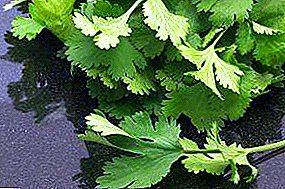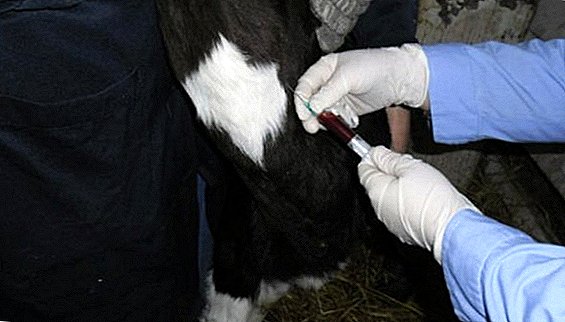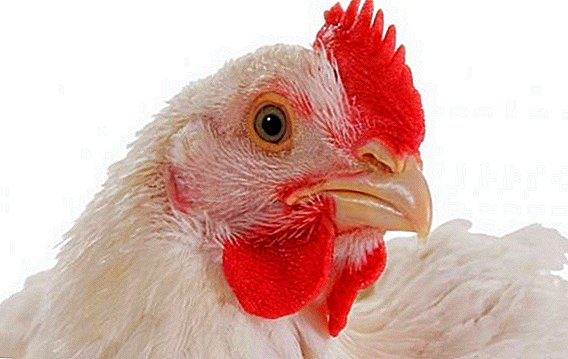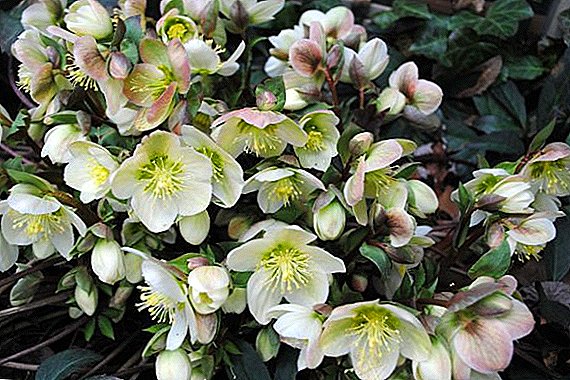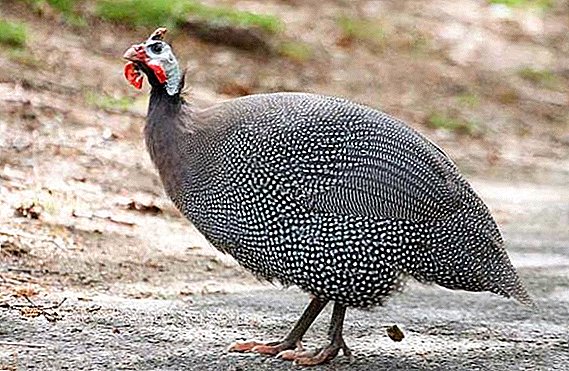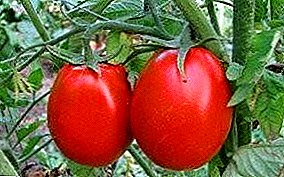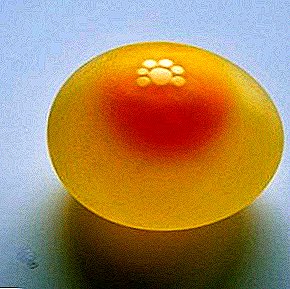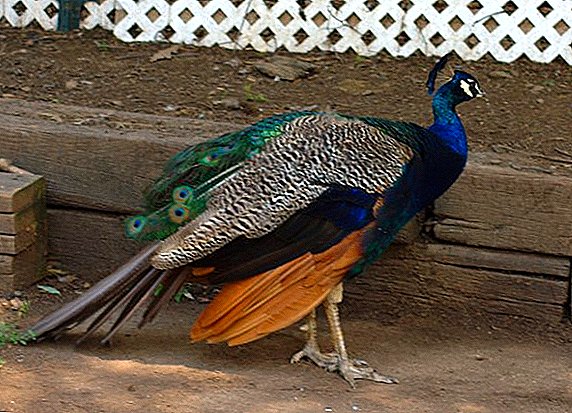 Peacocks are extraordinarily beautiful birds. The tail feathers are distinguished by a decorative pattern and a rich color palette, are actively used in decorative art. Their meat is edible and appreciated by gourmets, but more often they are kept to decorate the farmstead. Like most living creatures, these beautiful birds are subject to various diseases. Let's get acquainted with the list of diseases from which peacocks can suffer.
Peacocks are extraordinarily beautiful birds. The tail feathers are distinguished by a decorative pattern and a rich color palette, are actively used in decorative art. Their meat is edible and appreciated by gourmets, but more often they are kept to decorate the farmstead. Like most living creatures, these beautiful birds are subject to various diseases. Let's get acquainted with the list of diseases from which peacocks can suffer.
Infectious diseases
Infections cause the greatest damage to birds. They can reach peacocks from other birds, including wild ones, through air, water, excrement, eggs and shell. Therefore, it is necessary to limit the contact of your domestic birds with wild ones, to give them food and eggshells that have been heat treated. The best measures against these diseases is timely vaccination.  If an infectious disease is not detected and stopped in time, then the whole livestock of poultry may die. Sick individuals should be separated from healthy and provide medical care. Only a veterinarian can make the correct diagnosis and prescribe the necessary therapy. Quarantine is introduced at the compound and disinfection is carried out.
If an infectious disease is not detected and stopped in time, then the whole livestock of poultry may die. Sick individuals should be separated from healthy and provide medical care. Only a veterinarian can make the correct diagnosis and prescribe the necessary therapy. Quarantine is introduced at the compound and disinfection is carried out.
Bird flu
There are different strains of bird flu, and several species can be present on the compound at once. Carriers are other birds, as well as rodents and pigs.
We advise you to find out what peacocks are like, how to breed peacocks at home and how to feed them.
This contagious disease is characterized by the following symptoms.:
- poor appetite;
- lethargy;
- sore mucous, nasal discharge;
- difficulty breathing, wheezing;
- high temperature;
- diarrhea;
- intense thirst;
- neurosis;
- convulsions.
- lack of coordination of movements;
- wobbly gait;
- falling from the feet;
- atypical position of the neck and wings;
- lack of reactions to external irritations.
 Since there are strains of bird flu that are dangerous to humans, when in contact with diseased peacocks, a person should wear rubber gloves and a gauze bandage and goggles. Individuals with a severe form or a strain dangerous to humans are slaughtered. For birds, the most dangerous strains are H5 and H7. For people - H5N1.
Since there are strains of bird flu that are dangerous to humans, when in contact with diseased peacocks, a person should wear rubber gloves and a gauze bandage and goggles. Individuals with a severe form or a strain dangerous to humans are slaughtered. For birds, the most dangerous strains are H5 and H7. For people - H5N1.Important! Strain H5N1 can be passed from bird to human and can be fatal. This disease in people is acute and characterized by high fever (up to 39 ° C), headaches, pharyngitis, muscle pain, conjunctivitis. In severe cases, there is vomiting, pneumonia, severe diarrhea, which end in death. If you experience such symptoms after contact with sick peacocks, you should immediately seek medical help.
Fortunately, in our latitudes, this strain is not common. It is very dangerous for humans, transmitted from sick birds, but not transmitted from humans to humans.
Mild disease degrees in valuable birds can and should be treated. When symptoms appear, sick peacocks are removed to eliminate contact with healthy individuals. Birds with whom she has been in contact should also be quarantined.
Objects should also be disinfected and the litter with which the sick bird has come in contact. There is no specific treatment for the flu in peacocks, but with a sick bird you can do the following:
- should give the bird as much as possible to drink;
- antiviral treatment is carried out;
- give vitamins and green onions;
- in warm weather, the bird should be carried out in the sun - ultraviolet kills microbes, and in the cold period use an infrared lamp;
- clean the peacock's nose with a swab dipped in an antiseptic solution (for example, chlorhexidine).
 A sick bird should be in a warm room, without drafts. Food should be light and nutritious.
A sick bird should be in a warm room, without drafts. Food should be light and nutritious.A sick peacock must be shown to the vet. Against the background of a viral disease, a bacterial infection may develop, then a veterinarian prescribes appropriate antibiotics.
The bird recovers in about a week and immunity is developed to the transferred flu strain. After the bird is kept in quarantine for another 2 weeks.
The "relatives" of the peacock are wild chickens, pheasants, quails, and partridges.
There are vaccines for some strains of bird flu. Since peacocks are a valuable bird with a weak immune system, they are recommended to vaccinate against the most dangerous strains.
Pasteurellosis
The disease can occur in acute, subacute and chronic forms. With an over-acute pasteurellosis with a seemingly healthy bird, it dies suddenly, and at the autopsy, the veterinarian does not detect anything.
In the case of an acute form of the disease, the following symptoms are observed:
- weakness;
- discharge of mucus from the nostrils and beak;
- refusal of food;
- the bird drinks a lot;
- high temperature up to 43.5 ° С;
- diarrhea with gray, yellow or green droppings. It may also have blood discharge.
 If untreated, acute pasteurellosis can become chronic. In this case, peacocks will experience the following symptoms:
If untreated, acute pasteurellosis can become chronic. In this case, peacocks will experience the following symptoms:- nasal discharge will become viscous;
- poor appetite and, as a result, weight loss;
- liquid feces;
- arthritis and inflammation of the tendons.
You can receive the following drugs:
- "Levomitsetin". It is given 2-3 times a day at the rate of a daily dose of 30-50 mg per 1 kg of bird weight. The course of treatment lasts at least two weeks;
- "Chlortetracycline". The daily dose is calculated for birds 20-50 mg per 1 kg of weight. It is given 3 times a day with food.
- "Trisulfon". The preparation of a new generation in the form of a suspension, taken 3-5 days at the rate of a daily dose of 1 ml per 32 kg of the total mass of birds. The drug is dissolved in drinking water and given 2 times a day.

With the defeat of the gastrointestinal tract it is also recommended to take sulfanilamide drugs (Phtalazol, Sulfodimezin and others).
When the peacock recovers, it acquires immunity to this infection, but serves as a source of infection for other poultry. Therefore, quarantine, disinfection and monitoring of the health of birds in the compound are necessary.
The white peacock is not an albino, it is a rare natural color shape due to gene mutation.
The likelihood of a person becoming infected with pasteurellosis from a sick peacock is low and rarely happens. Infection occurs through damaged mucous membranes or wounds on the skin. Therefore, a person should limit his contact with sick birds - wear gloves and a respirator or gauze bandage.
Newcastle disease
This is a very dangerous disease for peacocks and other birds, not for nothing that it is also called the Asian plague. Characterized by the following symptoms:
- diarrhea with discoloration of litter;
- in the goiter there is a cream-colored liquid, gases, an unpleasant odor;
- heat;
- nasal congestion;
- cough;
- impaired coordination of movements;
- leg paralysis, neck twisting.
 The likelihood of infection with human pasteurellosis is low. Usually occurs through dust contaminated by this virus. An infected person has conjunctivitis and may experience a slight increase in body temperature.
The likelihood of infection with human pasteurellosis is low. Usually occurs through dust contaminated by this virus. An infected person has conjunctivitis and may experience a slight increase in body temperature.Marek's disease
This ailment is caused by the herpes virus. Symptoms of this disease are:
- lethargy;
- delayed development and growth in young;
- weight loss;
- constriction of the pupils of the eyes, the iris acquires gray tones;
- digestive disorders.
 There is no specialized treatment for Marek's disease. Antiviral treatment, quarantine measures and disinfection, the slaughter of critically ill individuals are prescribed by the veterinarian.
There is no specialized treatment for Marek's disease. Antiviral treatment, quarantine measures and disinfection, the slaughter of critically ill individuals are prescribed by the veterinarian.The best treatment is preventive measures in the form of vaccination, which can be carried out already at day old.
Did you know? Peacock was domesticated in India more than three thousand years ago and its image is widely used in Indian mythology. In local temples, the Buddha is often depicted riding on this bird. In Hinduism, peacocks are dedicated to God Krishna.
Mycoplasmosis
Infection with this infection occurs through airborne droplets and through infection of eggs. Mycoplasmosis affects the respiratory organs of peacocks and is characterized by the following symptoms:
- coughing and wheezing;
- dyspnea;
- discharge from the nostrils, sneezing;
- weight loss;
- pneumonia;
- disruption of the liver and kidneys.
- "Erythromycin". 40-50 mg per 1 kg of body weight for the first 3-4 days are given. It can be replaced with "Terramycin" or another antibiotic that the vet will recommend;
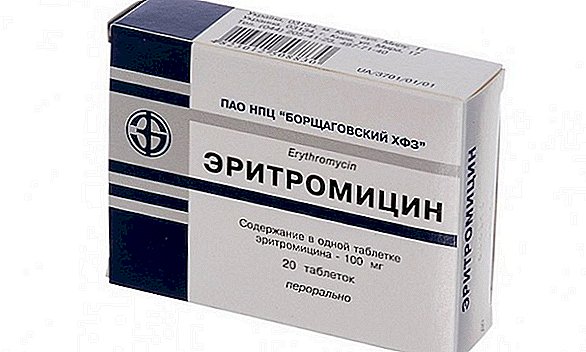
- "Furozalidone". Accepted 10 days, 3 times a day at the rate of a daily dose of 2.5-3 g per 1 kg of peacock weight.
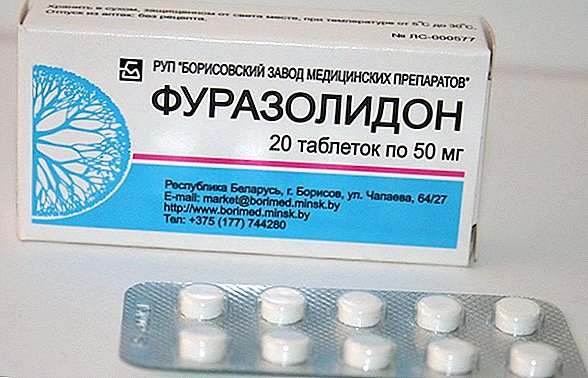
For the prevention of this disease, it is recommended to do vaccination twice a year.
Ornithosis
This disease is dangerous not only for peacocks, but also for humans. Its identification should be reported to the relevant authorities and it is imperative that you seek medical help and be examined. It affects the internal organs, nervous, lymphatic and genital systems, eyes. Most often proceeds in a chronic form.
Decorative chickens, peacock-doves, pheasant, mandarin duck, guinea fowl, quail, wild geese possess excellent decorative qualities.
When ornithosis, peacocks have the following symptoms:
- runny nose, sneezing;
- heavy breathing, coughing;
- poor appetite;
- weight loss;
- weakness;
- conjunctival inflammation;
- paralysis of the limbs;
- diarrhea;
- peritonitis.
- "Tetracycline". Peacocks give 40 mg per kilogram of weight for 10-14 days. It should be borne in mind that with frequent use of this drug, the pathogens become accustomed to it;
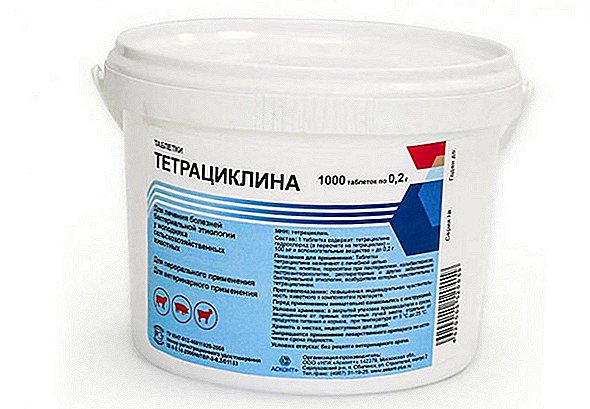
- "Erythromycin". The dosage is calculated on the basis of the intake of 40-50 mg per kilogram of body weight for 14 days.
 Treatment of this disease is not always effective and the likelihood of infection of a person remains. Frequent disinfection and constant hygiene are required.
Treatment of this disease is not always effective and the likelihood of infection of a person remains. Frequent disinfection and constant hygiene are required.Salmonellosis
There are 150 types of salmonellosis, but not all of them cause serious illnesses. The disease can occur in different forms. Some species can cause a disease in birds that occurs quickly and severely in peacocks.
In addition to chickens, ducks, geese, turkeys at home are increasingly breeding exotic birds - pheasants, ostriches, quails, guinea fowls.
Birds are dying due to dehydration amid severe diarrhea. Salmonella sticks cause her. It can cause severe poisoning in humans from infected eggs and meat that have not undergone the necessary heat treatment.
Acute form Salmonellosis in peacocks is characterized by the following symptoms:
- diarrhea with blood;
- weakness;
- intense thirst;
- loss of appetite and weight loss;
- conjunctivitis and tearing;
- convulsions;
- dyspnea;
- convulsions;
- paralysis.
- diarrhea;
- shortness of breath;
- weight loss;
- lag in development and growth.
- diarrhea;
- weight loss;
- swollen joints;
- lameness;
- conjunctival inflammation of the eye;
- lack of coordination of movements;
- inflammation of the cloaca, oviduct and ovaries;
- peritonitis.
 If symptoms of salmonellosis are detected, they are treated with antibiotics (Levomycetin, Gentamicin and others) for 5-7 days in such dosages:
If symptoms of salmonellosis are detected, they are treated with antibiotics (Levomycetin, Gentamicin and others) for 5-7 days in such dosages:- adult birds. Based on 40-50 mg per 1 kg of live weight. It is given 3 times a day;
- young. Based on 5-10 mg per 1 kg of weight.
For the prevention of salmonellosis, peacocks should be vaccinated.
Typhus
This disease is transmitted by airborne droplets and affects the digestive system. It can occur in different forms.
Symptoms acute typhoid the birds are as follows:
- weakness, decreased activity;
- intense thirst;
- lack of appetite;
- weight loss;
- diarrhea;
- glued down near the cloaca;
- the omission of the wings.
- bad plumage;
- inflammation of the joints;
- dyspnea;
- impaired digestion;
- elevated temperature.
- growth and developmental delay;
- thirst and poor appetite;
- weakness;
- peritonitis;
- hyperthermia;
- salpingitis.
 This disease is recommended to be treated with antimicrobial drugs - sulfonamides and antibiotics:
This disease is recommended to be treated with antimicrobial drugs - sulfonamides and antibiotics:- "Furozolidone". Add to feed at 0.04-0.06% for 15 days with a repetition of the course in 3-5 days;
- "Furidin". Put in food at a dosage of 200 mg per 1 kg for 10 days. Replaces "furozolidone", as less toxic;
- "Chlortetracycline" ("Biomitsin"). Give a daily dose at the rate of 10-12 mg per 1 kg of body weight, 2 times a day for 5-7 days.
Smallpox
Is a viral disease. There are three types of smallpox in peacocks - diphtheria, conjunctival and smallpox. The source of infection is sick birds, spreading the virus with fallen off pockmarks, secretions and films that infect food, water and various objects.
Carriers of the virus can also be insects - ticks, mosquitoes, flies and others. Infection can occur through the digestive system, damage to the skin, respiratory tract. Duration of illness - from 3 to 8 days.
Common symptoms of smallpox in peacocks:
- lethargy, loss of appetite;
- ruffled feather cover;
- dyspnea.
Conjunctival smallpox is expressed in the appearance of conjunctivitis, tearing, eyelid edema, and purulent discharge from the eyes.  Smallpox disease is expressed in the formation of ospinok in the area of the ridge, earrings, and in some cases in the area of the torso and legs. With diphtheric and conjunctival forms of smallpox, mortality rates are higher than with smallpox.
Smallpox disease is expressed in the formation of ospinok in the area of the ridge, earrings, and in some cases in the area of the torso and legs. With diphtheric and conjunctival forms of smallpox, mortality rates are higher than with smallpox.
There are no special medicines for treatment. Treatment consists of removing the film from the larynx and oral cavity, as well as further processing of the affected areas with 5% iodoglycerol solution. Rinse eyes with 2% boric acid solution. In the diet include vitamins and more greens.
Peacocks with a mild form of the disease are isolated in a separate room and take curative measures, seriously ill patients are subject to destruction and further disposal.
All birds should be vaccinated as recommended by the veterinarian. Mandatory complete disinfection of the room, change litter, handle inventory. Disinfection is carried out using a hot 3% sodium hydroxide solution or a 20% solution of hydrated lime. Disinfection is also carried out. Quarantine is announced and removed after 30 days.
Plague
This is an acute viral disease that is quickly transmitted among birds. The disease lasts for about 1 to 7 days. The source of infection are diseased birds, as well as infected food, eggs, drinking, bedding, inventory, and more. The virus is transmitted through the gastrointestinal system, the mucous membranes of the respiratory tract, as well as mucous eyes, cuts on the skin. It quickly enters the circulatory system of the body.  The disease is expressed in the feverish state of the bird. Through the vessels, the plague virus enters and infects the internal organs, which leads to the death of peacocks.
The disease is expressed in the feverish state of the bird. Through the vessels, the plague virus enters and infects the internal organs, which leads to the death of peacocks.
The main signs signaling the plague are:
- a strong temperature increase of 43-44 ° C;
- lethargy, loss of appetite;
- ruffled feathers;
- puffiness of the eyelids;
- redness and tearing of the eyes;
- discharge of mucus from the nose;
- swelling in the head, eyelids, neck, chest and paws;
- breathing problems and wheezing;
- drooping of the head, convulsions.
For the prevention of this disease should be vaccinated.
Noncommunicable diseases
This group of diseases is not contagious and is usually associated with disturbances in the content and diet of peacocks.
Anemia
This is a serious disease that arises from blood-sucking parasites after trauma, poisoning, diseases of the liver and bone marrow. Chemical poisoning can lead to severe anemia. To provoke a disease can and lack of vitamins B and E in the body of a bird. Tumors can cause anemia, as well as circulatory disorders.  For the treatment of anemia, the following agents are used:
For the treatment of anemia, the following agents are used:
- vitamin complexes;
- glucose;
- calcium;
- "Cortisone";
- iron preparations;
- Calcium chloride with a complex of essential amino acids and beneficial trace elements is added to the drink.
Foreign bodies on the body (tumors)
Peacocks have a weak immune system, so they are subject to the formation of various tumors and foreign structures on the body. It is almost impossible to notice such diseases at the initial stage, so they do not manifest themselves for a long time. Unfortunately, the detection of these diseases occurs in difficult stages.
New growths begin to cause pain, disturb, interfere with movement. For these reasons, the bird begins to peck at the source of anxiety, which can lead to infection, inflammation and blood poisoning.
The main signs that signal the appearance of tumor formations are as follows:
- first, the skin develops swelling;
- skin tissue compacted;
- lipomas appear;
- inflammations or suppurations form on the body.
Paralysis
Home breeds of peacocks are prone to such a dangerous disease as paralysis. The reason is inadequate detention conditions. Paralysis can be the result of an exacerbation of an infectious disease, a consequence of impaired function of the nervous system, as well as the result of trauma.  The initial signs that signal the onset of paralysis are:
The initial signs that signal the onset of paralysis are:
- apathy, decreased appetite, activity;
- the toes on the paws are tucked in, which prevents the peacock from walking freely;
- swelling in the abdominal region;
- stomach upset;
- convulsions.
The following agents are used to treat such a disease:
- vitamin complexes;
- heating infrared lamp;
- "Cortisone".
Did you know? The content of peacocks in captivity is mentioned in the writings of ancient Egypt, Babylon, Greece, Rome and other ancient states. This bird was especially popular with the ancient Romans as a luxury item and delicacy. At that time, on some islands located near the Apennine Peninsula, so many peacocks were bred that their prices fell, and in Rome there were more than quails.
Runny nose and inflammation of the nasal mucosa
Runny nose and inflammation of the nasal mucosa are usually the result of colds. Usually these phenomena occur simultaneously. Such processes are accompanied by cough, inflammation of the larynx.
If the disease is not treated, then the peacock may experience breathing problems, as the discharge blocks the nasal passages.  The first sign of nasal congestion is that the peacock begins to scratch its beak against a fence, cage, or any other surface. The bird shakes its head, claws it, scratching its beak, trying to free the stuffy nose from mucus.
The first sign of nasal congestion is that the peacock begins to scratch its beak against a fence, cage, or any other surface. The bird shakes its head, claws it, scratching its beak, trying to free the stuffy nose from mucus.
The main signs indicating inflammation of the nasal mucosa and runny nose:
- shortness of breath, difficulty breathing;
- lack of appetite;
- constantly open beak;
- possible diarrhea.
- vitamin and mineral supplements;
- heating lamp with infrared rays;
- tetracycline;
- streptomycin and others.
Inflammatory processes on the feet
Often peacocks have inflammatory processes on the paws. This is due to the long stay of the bird on the asphalt or other hard, flat surface.
If time does not take action, the paws will begin to appear tumors that will bleed.
The signs of the disease, which signal the appearance of inflammatory processes, are as follows:
- swelling appears in the paw area;
- it is hard for a bird to walk, it starts limping, moving little;
- gait becomes shaky;
- the bird alternately raises its paws and holds them up for a long time;
- infections occur in the damaged areas of the paws;
- the appearance of wounds that bleed on the paws.
 This disease can not be missed. At the first signs you need to wash the paws three times a day with a weak chlorine solution of iron or iodine-based products. Other antibacterial agents may be used as prescribed by a veterinarian.
This disease can not be missed. At the first signs you need to wash the paws three times a day with a weak chlorine solution of iron or iodine-based products. Other antibacterial agents may be used as prescribed by a veterinarian.It is forbidden to let the peacocks go on walks during the period of illness, especially on sand and grass, so as not to infect the wound. Indoors, the floor is covered with a clean and soft cloth or paper. The room must be well cleaned, the perches treated with disinfectants.
Gout and Kidney Inflammation
Gout suffer primarily from birds that are kept in captivity. In the wild, peacocks are immune to this disease. Often occurs due to improper diet, when the food includes a lot of animal feed (proteins, fats), which the body does not digest well. The appearance of gout contributes to the appearance of gout, first of all, it is a small space, no walking.
The symptoms of the disease that signal gout are as follows:
- strong thirst;
- poor appetite;
- signs of poisoning;
- litter is white;
- inflammation of the joints begins;
- lameness;
- bowel disorder;
- lethargy, decreased appetite.
 The disease is difficult to treat, it is better to take preventive measures to prevent its occurrence. To do this, include more greens in the diet, use only high-quality food. Do not forget about vitamin supplements and essential minerals. Especially important for the proper metabolism of vitamins A, B6 and B12.
The disease is difficult to treat, it is better to take preventive measures to prevent its occurrence. To do this, include more greens in the diet, use only high-quality food. Do not forget about vitamin supplements and essential minerals. Especially important for the proper metabolism of vitamins A, B6 and B12.Important! To prevent gout, you need to buy quality feed from reputable suppliers.Aviary for walking should be spacious enough, and walks in warm weather - regular.
For the treatment of gout using the following tools:
- decoction of flax seeds;
- medication drugs.
- "Atofan" or "Nevoatofan". Give each bird 0.51.0 g orally per day for two days;
- alkaline solutions. Peacocks give a 1% solution of sodium bicarbonate, a 0.5% solution of Carlsbad salt, or a 0.25% solution of hexamethylenetetramine for 2 weeks.
The signs of the disease that signal such a disease are as follows:
- bowel disorder. There may be urine in the litter;
- decreased activity and appetite;
- the emergence of thirst.
 With easy form prescribe the following treatment:
With easy form prescribe the following treatment:- vitamins, especially groups A and C;
- replacement of water with quality bottled drinking water without gas;
- heating under the lamp with infrared rays.
Skin diseases
This group of diseases causes birds to feel discomfort and severe itching that harm their decorative appearance.
Dermatitis
The most common skin disease in peacocks is dermatitis. This disease often arises due to the inadequate maintenance of these beautiful birds. Dirty house, aviary, unwashed long dishes - any unsanitary conditions can provoke this disease.
The birds itch, and they constantly pull out feathers, they can peck up the skin to the blood, and it is especially dangerous when this process occurs under the wings or in the neck. The course of the disease may be accompanied by staphylococcus as well as colibacteriosis.
The signs of the disease that signal dermatitis are as follows:
- the appearance of inflammation and rash;
- the occurrence of red spots;
- formation of yellowish crusts;
- loss of first cover;
- dry skin;
- itching;
- apathetic behavior, loss of appetite, heart palpitations.
 For the treatment of dermatitis use vitamins and anti-fungal agents:
For the treatment of dermatitis use vitamins and anti-fungal agents:- iodine-glycerin in a ratio of 1 to 5;
- 1% "Tripaplavin";
- antibacterial and antiallergic drugs;
- broad spectrum antibiotics.
Did you know? The peacock is the national bird for the Indians from February 1, 1963. The main rival in choosing her as a symbol of India was the Indian Grand Bust. In neighboring countries, representatives of the family of pheasants also became a national symbol - in Nepal, the Himalayan pheasant-monal was chosen, and Myanmar preferred the gray peacock pheasant.
Scabies
Such a skin disease in birds, like scabies, completely affects the whole body, including the eyes. The advanced stage of this disease can lead to balding of the skin.
In identifying skin diseases, it is important to thoroughly disinfect the room, walker, feeders, drinkers, replace litter.
The signs of the disease that signal dermatitis are as follows:
- whitish-gray coating on the skin, similar to lime;
- itching;
- deformation processes on the beak;
- loss of pen cover.
For treatment use:
- Birch tar;

- ointment "Yakutin" and "Mikotectan";
- 0.15% Neguven.







